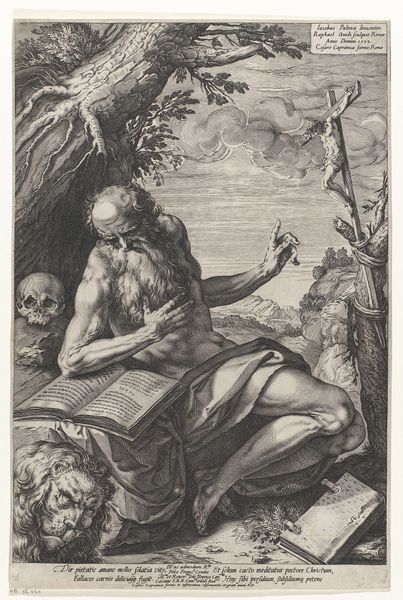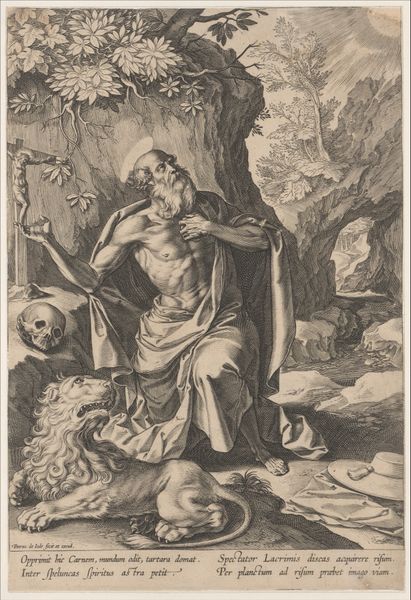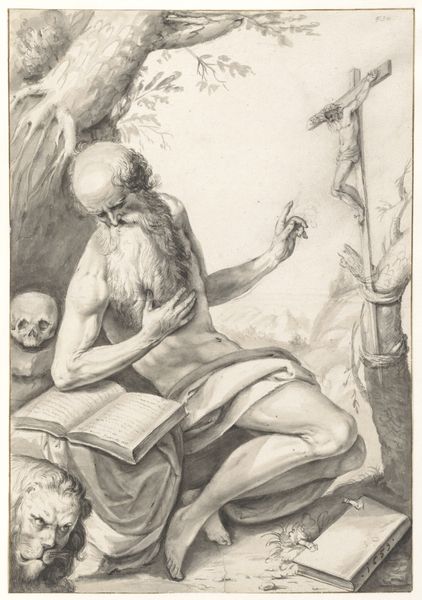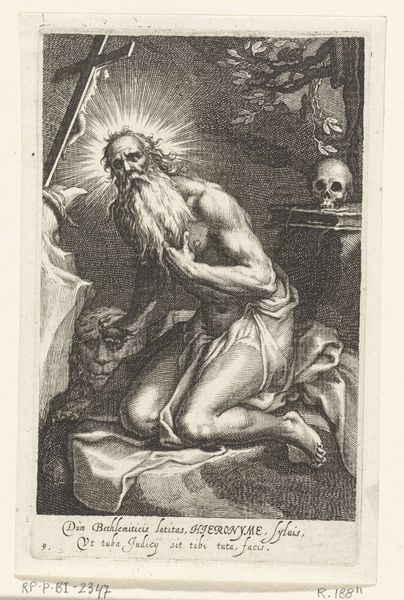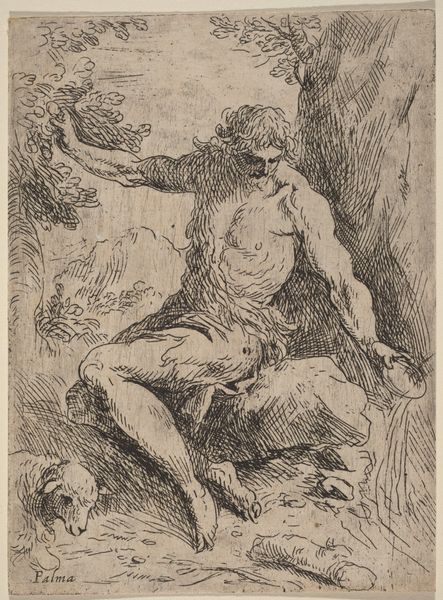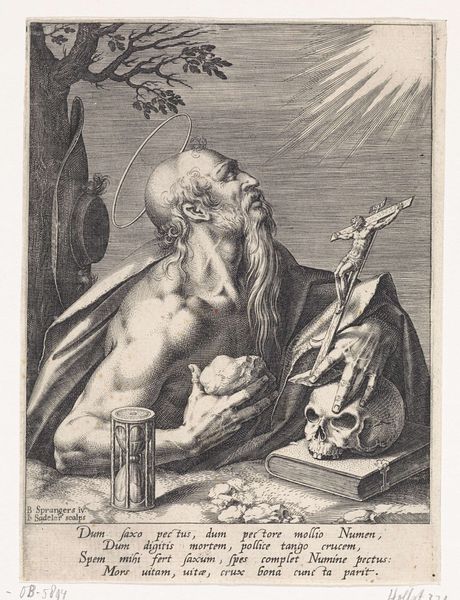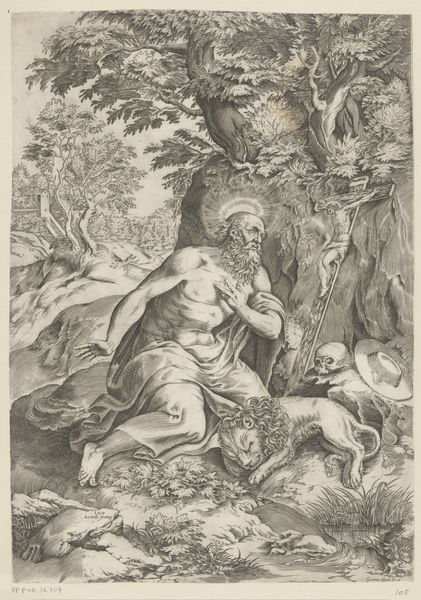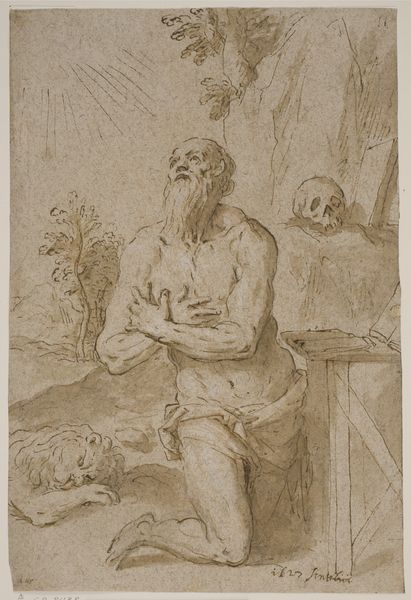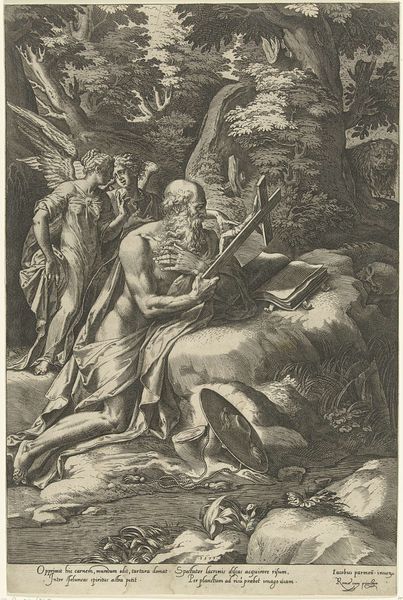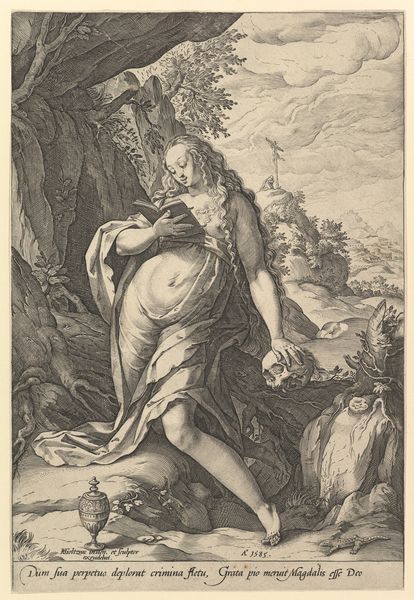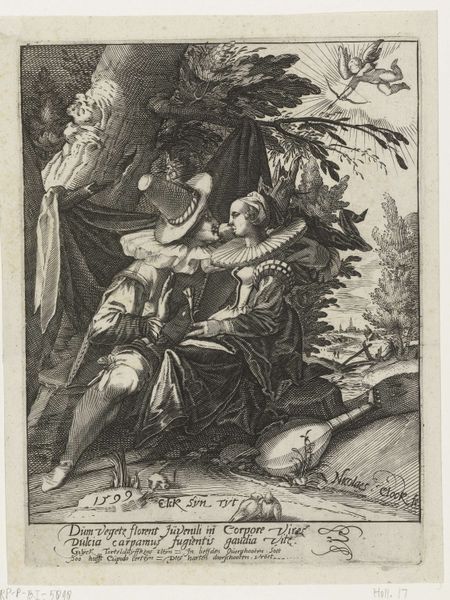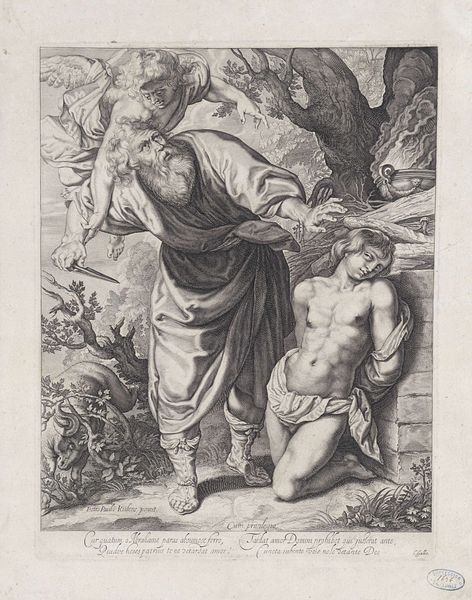
print, engraving
#
portrait
#
baroque
# print
#
portrait drawing
#
history-painting
#
engraving
Dimensions: 434 mm (height) x 295 mm (width) (bladmaal)
Editor: Here we have Hendrick Goltzius' "St. Jerome," made in 1596. It's an engraving, giving it a stark, graphic quality. It strikes me as quite dramatic, with the skull, the lion, and the expressive figure of Jerome himself. What catches your eye in this piece? Curator: Well, look at the *means* of production, first. This isn’t just about a biblical figure; it’s about the labour and skill involved in engraving, meticulously rendering every line to create this intense visual experience. The artist acts as a craftsman here. How do the textures, achieved through this particular material process, affect the reception of the spiritual narrative, would you say? Editor: I see what you mean. The lines give a kind of tactile quality, almost like you can feel the texture of Jerome’s skin and beard, or the lion’s fur. It brings it to life in a very material way, despite the religious subject. Curator: Exactly! It almost democratizes the image. Engravings like these were often reproduced and distributed widely. Think about the impact of making such imagery accessible – this disrupts the art world as something not exclusively viewed or owned by wealthy religious patrons. Editor: So, it's not just about devotion; it’s also about the consumption and dissemination of images in society. Were prints a kind of popular culture in that period? Curator: In a way, yes. They were a relatively affordable form of visual culture. Consider also, Goltzius was known for his virtuosity. This print isn't just about faith, but about showcasing artistic skill, a marketable skill. This elevates craftsmanship, making it central to understanding the piece. How does that change your understanding of it? Editor: I guess it makes me appreciate the technical skill involved. The details of the fur, or even the musculature. It’s labour intensive to say the least! Thanks! Curator: Absolutely! Seeing it through the lens of its material creation and dissemination gives it a new dimension. I'll definitely think about that in future artwork encounters.
Comments
No comments
Be the first to comment and join the conversation on the ultimate creative platform.
